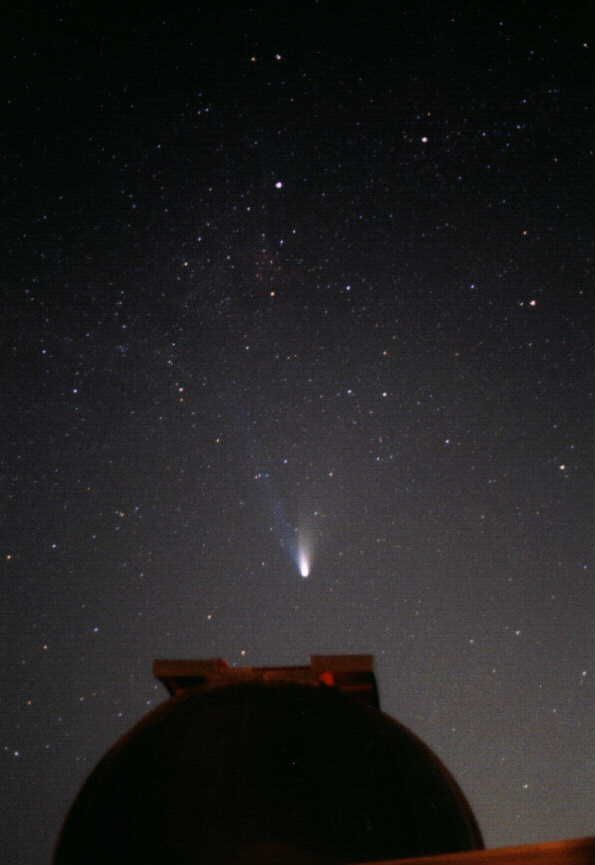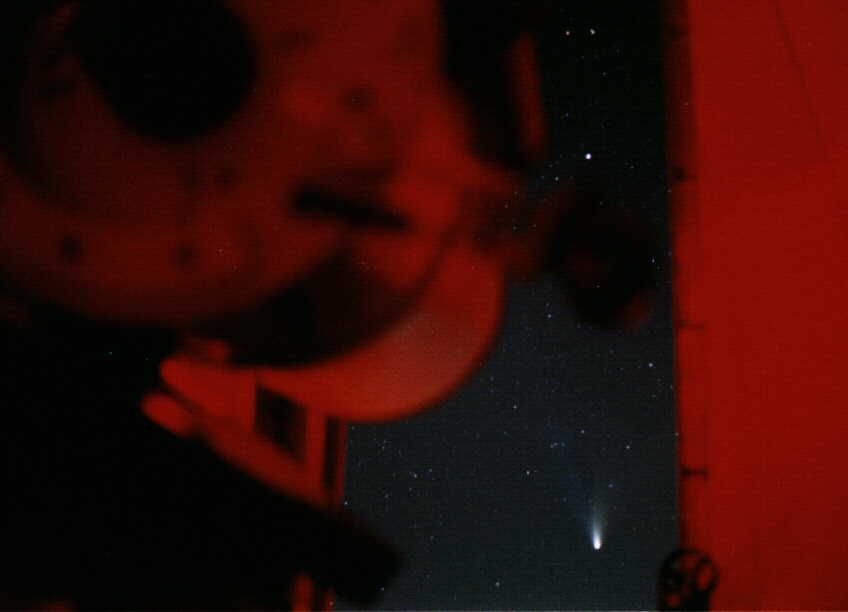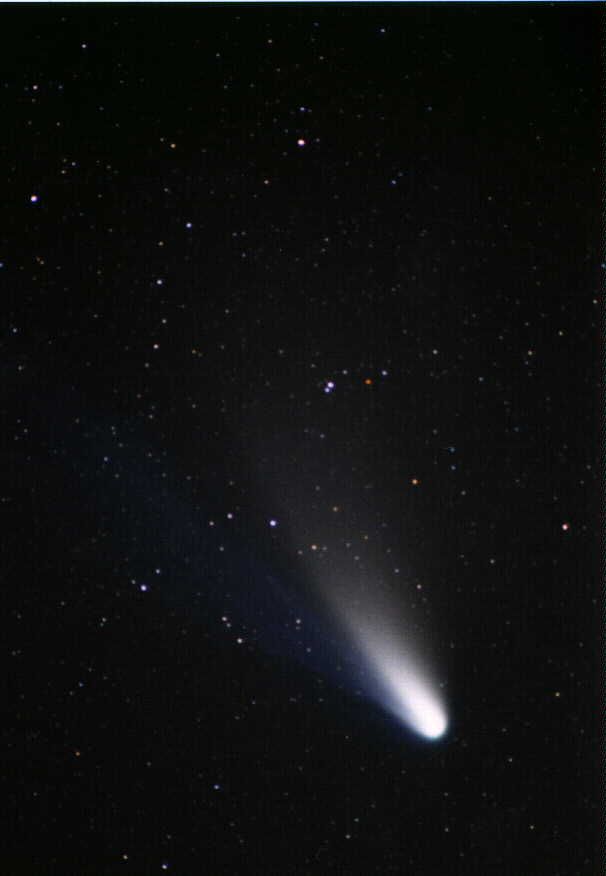One of the comets that put on perhaps the finest show in my life was comet Hale-Bopp. Its 1997 apparition was indeed a sight to behold. It sported bright ion and dust tails making it a fine object to see from both dark skies and in most cities. Because they tend to be so large in the sky many comets look quite poor when viewed through a telescope. They often resemble a big fuzz. Not Hale-Bopp. Telescopically it looked sort of like one of those lawn sprinklers that shoots out water in a spiral pattern. While you couldn't watch the comet rotate, the spiral pattern was as amazing to behold as the tails were.
So Hale-Bopp was awesome when seen through a telescope. It was equally awesome with the naked eye and it was visible for weeks. All which added up to make it a Great Comet.
Back in 1997 when the comet made its passage through the inner solar system I was working at Lake Afton Public Observatory in Wichita, Kansas. I was going through some of the photos I took back then and noticed that some of them were shot 16 years ago tonight.
Here is how the comet looked over the Lake Afton dome:
 |
| 50 mm lens, ~20 seconds on Kodak Royal Gold 1000 film |
Check out the caption. Yes, this was shot with film. The print was then scanned to make it digital (The scans aren't the best, someday I need to dig up the prints and re-scan them). A lot has changed since then. 1000 speed film was pretty fast back in the 90s. Today's DSLR cameras can do a lot better. While Pan-STARRS will not be visible in a as dark a sky as Hale-Bopp was, it should be easier to capture nice pics. And if it doesn't deliver later this year Comet ISON promises to put on an even better show.
Here's the view from within the dome.
 |
| 50mm lens, 20 second exposure |
 |
| 300 mm lens, 5 minute exposure |
No comments:
Post a Comment